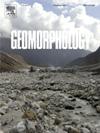Analyzing topographic change profiles in coastal foredune systems: Methodological recommendations
IF 3.1
2区 地球科学
Q2 GEOGRAPHY, PHYSICAL
引用次数: 0
Abstract
Estimates of total sand volume in foredunes are commonly made for purposes of predicting coastal erosion and inundation potential during major storms, which is of critical importance for resource management and engineering purposes. However, changes in dune volume through time are potentially of greater relevance to process geomorphologists because volume changes are diagnostic of the long-term evolution of beach-dune systems and can be related to drivers of change (e.g., storm climatology, sediment supply, human action). The methods by which dune volume change estimates are made vary widely in the literature because there are no established protocols that provide guidance on the horizontal distances over which volume integration should be performed. In addition, identifying a diagnostic geomorphic feature such as the dune toe as a limit on integration is fraught with subjective uncertainties. In this paper, an objective methodology for quantifying dune volume change directly (rather than absolute volume) is proposed that is simple, intuitive, and robust. The horizontal limits of integration are identified by zero-crossings in the topographic change profiles between two transect surveys taken at different times, and this avoids challenges associated with identification of the dune toe as a fixed profile feature. Instead, the proposed method focuses on locations of morphodynamic significance where there has been a transition from erosion to accretion in the time interval between surveys.
求助全文
约1分钟内获得全文
求助全文
来源期刊

Geomorphology
地学-地球科学综合
CiteScore
8.00
自引率
10.30%
发文量
309
审稿时长
3.4 months
期刊介绍:
Our journal''s scope includes geomorphic themes of: tectonics and regional structure; glacial processes and landforms; fluvial sequences, Quaternary environmental change and dating; fluvial processes and landforms; mass movement, slopes and periglacial processes; hillslopes and soil erosion; weathering, karst and soils; aeolian processes and landforms, coastal dunes and arid environments; coastal and marine processes, estuaries and lakes; modelling, theoretical and quantitative geomorphology; DEM, GIS and remote sensing methods and applications; hazards, applied and planetary geomorphology; and volcanics.
 求助内容:
求助内容: 应助结果提醒方式:
应助结果提醒方式:


